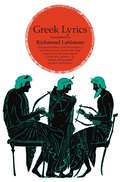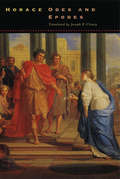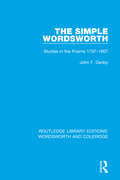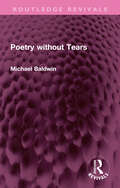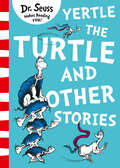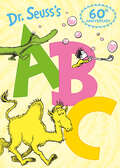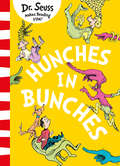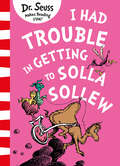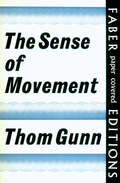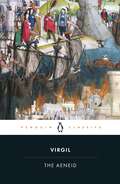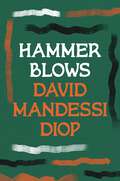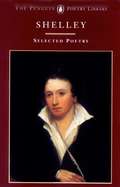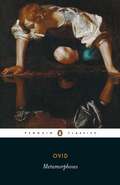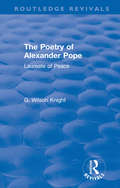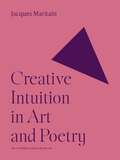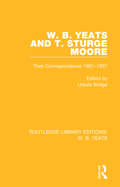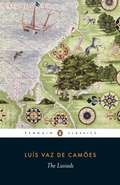- Table View
- List View
Greek Lyrics
by Richmond Lattimore"Professor Lattimore, holding closely to the original metres, has produced renderings of great power and beauty. His feeling for the telling noun and verb, the simple yet poignant epithet, and the dramatic turn of syntax is marked. He has completely freed the poems from sentimentality, and the thrilling ancient names—Anacreon, Alcaeus, Simonides, Sappho—acquire fresh brilliance and vitality under his hand."—Louise Bogan, The New Yorker "The significant quality of Mr. Lattimore's versions is that they are pure. The lenses he provides are as clear as our language is capable of making them."—Moses Hadas, N.Y. Herald Tribune
Greek Lyrics
by Richmond Lattimore"Professor Lattimore, holding closely to the original metres, has produced renderings of great power and beauty. His feeling for the telling noun and verb, the simple yet poignant epithet, and the dramatic turn of syntax is marked. He has completely freed the poems from sentimentality, and the thrilling ancient names—Anacreon, Alcaeus, Simonides, Sappho—acquire fresh brilliance and vitality under his hand."—Louise Bogan, The New Yorker "The significant quality of Mr. Lattimore's versions is that they are pure. The lenses he provides are as clear as our language is capable of making them."—Moses Hadas, N.Y. Herald Tribune
Greek Lyrics
by Richmond Lattimore"Professor Lattimore, holding closely to the original metres, has produced renderings of great power and beauty. His feeling for the telling noun and verb, the simple yet poignant epithet, and the dramatic turn of syntax is marked. He has completely freed the poems from sentimentality, and the thrilling ancient names—Anacreon, Alcaeus, Simonides, Sappho—acquire fresh brilliance and vitality under his hand."—Louise Bogan, The New Yorker "The significant quality of Mr. Lattimore's versions is that they are pure. The lenses he provides are as clear as our language is capable of making them."—Moses Hadas, N.Y. Herald Tribune
Greek Lyrics
by Richmond Lattimore"Professor Lattimore, holding closely to the original metres, has produced renderings of great power and beauty. His feeling for the telling noun and verb, the simple yet poignant epithet, and the dramatic turn of syntax is marked. He has completely freed the poems from sentimentality, and the thrilling ancient names—Anacreon, Alcaeus, Simonides, Sappho—acquire fresh brilliance and vitality under his hand."—Louise Bogan, The New Yorker "The significant quality of Mr. Lattimore's versions is that they are pure. The lenses he provides are as clear as our language is capable of making them."—Moses Hadas, N.Y. Herald Tribune
Odes and Epodes
by Joseph P. HoraceThe writings of Horace have exerted strong and continuing influence on writers from his day to our own. Sophisticated and intellectual, witty and frank, he speaks to the cultivated and civilized world of today with the same astringent candor and sprightliness that appeared so fresh at the height of Rome's wealthy and glory. In 23 B.C., when he published the first three books of his lyrics, Horace was 42 years old, secure in the favor of the emperor Augustus, and living in ease and comfort as a country gentleman on his Sabine farm. Serenity is reflected in these lyrics, certainly, but so are other experiences, for Horace had lived through three major political crises in a society that was the center of the world, that was sophisticated, refined—and beginning to decay. A worldly, high-spirited, cultivated man, Horace responds in his poetry to the myriad elements of Roman life he knew so well. The Odes and Epodes of Horace collects the entirety of his lyric poetry, comprising all 103 odes, the Carmen Saeculare ("Festival Hymn"), and the earlier epodes. Joseph P. Clancy has achieved a mirroring of the originals that is worthy in its own right as English verse, and his introductions to each book of lyrics are both lively and informed.
Odes and Epodes
by Joseph P. HoraceThe writings of Horace have exerted strong and continuing influence on writers from his day to our own. Sophisticated and intellectual, witty and frank, he speaks to the cultivated and civilized world of today with the same astringent candor and sprightliness that appeared so fresh at the height of Rome's wealthy and glory. In 23 B.C., when he published the first three books of his lyrics, Horace was 42 years old, secure in the favor of the emperor Augustus, and living in ease and comfort as a country gentleman on his Sabine farm. Serenity is reflected in these lyrics, certainly, but so are other experiences, for Horace had lived through three major political crises in a society that was the center of the world, that was sophisticated, refined—and beginning to decay. A worldly, high-spirited, cultivated man, Horace responds in his poetry to the myriad elements of Roman life he knew so well. The Odes and Epodes of Horace collects the entirety of his lyric poetry, comprising all 103 odes, the Carmen Saeculare ("Festival Hymn"), and the earlier epodes. Joseph P. Clancy has achieved a mirroring of the originals that is worthy in its own right as English verse, and his introductions to each book of lyrics are both lively and informed.
The Simple Wordsworth: Studies in the Poems 1979-1807 (RLE: Wordsworth and Coleridge)
by John F. DanbyFirst published in 1960, this book studies Wordsworth’s ‘simple’ poems, such as the Lyrical Ballads, as products of a sophisticated and powerfully successful literary genius. The author aims to approach the poems as perhaps Wordsworth expected his first readers to; but as they have never been in fact. The result of this approach is to discover a Wordsworth far different to that which he has previously been presented as — the ‘Sage of Rydal’ at one extreme and a naïve perpetrator of poetical blunders at the other — and, the author argues, a far more exciting one. This book will be of interest to students of literature.
The Simple Wordsworth: Studies in the Poems 1979-1807 (RLE: Wordsworth and Coleridge)
by John F. DanbyFirst published in 1960, this book studies Wordsworth’s ‘simple’ poems, such as the Lyrical Ballads, as products of a sophisticated and powerfully successful literary genius. The author aims to approach the poems as perhaps Wordsworth expected his first readers to; but as they have never been in fact. The result of this approach is to discover a Wordsworth far different to that which he has previously been presented as — the ‘Sage of Rydal’ at one extreme and a naïve perpetrator of poetical blunders at the other — and, the author argues, a far more exciting one. This book will be of interest to students of literature.
Poetry without Tears (Routledge Revivals)
by Michael BaldwinFirst published in 1959, Poetry without Tears is a book not about what poetry is. The author argues that this book is not concerned with the educational resurrection of a dead art but about the artistic resurrection of education. Poetry is a force released in activity. That is how an educationalist and a poet see it. It is rarely how critics and academics see it. They see it as a series of poems, correspondingly it is as a ‘Collection of Poems’ that it is taught. Basic educational truths are frequently overlooked in our teaching of the arts, and no art suffers more from this than poetry. Baldwin goes on to say that in the end teaching is a creative activity and the creators are the best teachers. This book is a must read for students of both literature and education.
Poetry without Tears (Routledge Revivals)
by Michael BaldwinFirst published in 1959, Poetry without Tears is a book not about what poetry is. The author argues that this book is not concerned with the educational resurrection of a dead art but about the artistic resurrection of education. Poetry is a force released in activity. That is how an educationalist and a poet see it. It is rarely how critics and academics see it. They see it as a series of poems, correspondingly it is as a ‘Collection of Poems’ that it is taught. Basic educational truths are frequently overlooked in our teaching of the arts, and no art suffers more from this than poetry. Baldwin goes on to say that in the end teaching is a creative activity and the creators are the best teachers. This book is a must read for students of both literature and education.
Yertle the Turtle and Other Stories
by Dr. SeussIn this hilarious book, featuring three timeless fables, Dr. Seuss explores the pitfalls of growing too big for your boots!
Dr. Seuss’s ABC
by Dr. SeussFrom Aunt Annie’s alligator to the colourful Zizzer-Zazzer-Zuzz, Dr. Seuss’s delightful book introduces early learners to the letters of the alphabet through an amazing array of crazy creatures. Enjoy this fantastic classic anytime, anywhere. Hilariously read by comic legend, Rik Mayall.
Hunches in Bunches
by Dr. SeussA new paperback edition, never before published in the UK, written and illustrated by the one and only Dr. Seuss.
I Had Trouble in Getting to Solla Sollew
by Dr. SeussAs our hero struggles to reach the city of Solla Sollew, where they never have troubles, at least very few, we realise that it’s better to face up to life’s problems than to try to run away from them!
The Sense of Movement: [poems
by Thom GunnThe Sense of Movement, Thom Gunn's second collection, was first published in 1957.'This book . . . establishes Gunn as one of the few really interesting poets of his generation and promises greatly for the future.' Times Literary Supplement
The Aeneid: Selected And Arranged With Brief Notes (classic Reprint)
by Virgil David WestVirgil's Aeneid, inspired by Homer and inspiration for Dante and Milton, is an immortal poem at the heart of Western life and culture. Virgil took as his hero Aeneas, legendary survivor of the fall of Troy and father of the Roman race, and in telling a story of dispossession and defeat, love and war, he portrayed human life in all its nobility and suffering.
Hammer Blows
by David Mandessi DiopIn this English translation of Hammer Blows, the famous collection of poems by renowned writer David Diop is presented in all its brilliance and wit.First published in 1956, this powerful collection was written during the height of the Negritude movement in France. Posthumously translated into English as Hammer Blows, Diop's voice offers a passionate critique of slavery in the American South and colonialism in Africa.Edited and translated from the French by Simon Mpondo and Frank Jones.'A vigorous use of diction that cuts like a whip, an impassioned and total commitment to the oppressed.' John F. Povey
Selected Poetry: Poems
by Isabel Quigly Percy ShelleySHELLEY'S WORK HAS BEEN CRITICIZED FOR ITS DIDACTICISM AND UNDISCIPLINED EMOTIONALISM. BUT ESSENTIALLY HE WAS A POET OF IDEAS AND IN HIS SEARCH FOR TRUTH AND ORIGINAL HUMAN PERFECTION, SHELLEY WAS INSPIRED AS MUCH BY THE GREEK POETS AND PHILOSOPHERS, PARTICULARLY PLATO, AS BY THE RADICALISM OF HIS OWN AGE. ABOVE ALL, HIS GREAT GIFT WAS HIS LYRICISM AND HIS VERSE COMES AS NEAR TO MUSIC AS POETRY CAN.
Metamorphoses (PDF)
by Mary M. Innes Mary Innes OvidOvid drew on Greek mythology, Latin folklore and legend from ever further afield to create a series of narrative poems, ingeniously linked by the common theme of transformation. Here a chaotic universe is subdued into harmonious order: animals turn to stone; men and women become trees and stars. Ovid himself transformed the art of storytelling, infusing these stories with new life through his subtley, humour and understanding of human nature, and elegantly tailoring tone and pace to fit a variety of subjects. The result is a lasting treasure-house of myth and legend.
Routledge Revivals: Laureate of Peace (Routledge Revivals)
by G. Wilson KnightFirst published in 1955, this exegesis on the writings of Alexander Pope reveals the technical felicities of his poetry, and is the first to be devoted to the great meaning inherent in his work. One section, which has appeared before and did much to redirect the study of Pope, has been thoroughly revised. Of the other four chapters, one offers an original of The Temple of Fame, and, while discussing this neglected poem, makes several suggestions which may be said to constitute a significant advance in aesthetics. Another analyses Byron’s support of Pope, regarding it as a landmark in the history of English literary criticism and as necessary to the understanding of Pope and Byron alike. The last chapter discusses the relation of Pope’s thought to our own time. This book adds much to what is already known of Pope, and will go far in reviving an interest in the work and philosophy of the Laureate of Peace.
Routledge Revivals: Laureate of Peace (Routledge Revivals)
by G. Wilson KnightFirst published in 1955, this exegesis on the writings of Alexander Pope reveals the technical felicities of his poetry, and is the first to be devoted to the great meaning inherent in his work. One section, which has appeared before and did much to redirect the study of Pope, has been thoroughly revised. Of the other four chapters, one offers an original of The Temple of Fame, and, while discussing this neglected poem, makes several suggestions which may be said to constitute a significant advance in aesthetics. Another analyses Byron’s support of Pope, regarding it as a landmark in the history of English literary criticism and as necessary to the understanding of Pope and Byron alike. The last chapter discusses the relation of Pope’s thought to our own time. This book adds much to what is already known of Pope, and will go far in reviving an interest in the work and philosophy of the Laureate of Peace.
Creative Intuition in Art and Poetry (The A. W. Mellon Lectures in the Fine Arts #1)
by Jacques MaritainThe classic work on the sublime interplay between the arts and poeticsThis book explores the rich and complex relationship between art and poetry, shedding invaluable light on what makes each art form unique yet wholly interdependent. Jacques Maritain insists on the part played by the intellect as well as the imagination, showing how poetry has its source in the preconceptual activity of the rational mind. As Maritain argues, intellect is not merely logical and conceptual reason. Rather, it carries on an exceedingly more profound and obscure life, one that is revealed to us as we seek to penetrate the hidden recesses of poetic and artistic activity. Incisive and authoritative, this illuminating book is the product of a lifelong reflection on the meaning of artistic expression in all its varied forms.
W. B. Yeats and T. Sturge Moore: Their Correspondence 1901-1937 (Routledge Library Editions: W. B. Yeats)
by Ursula BridgeThe letters in this book, first published in 1953, throw light on the literary scene at a time in which William Butler Yeats and Thomas Sturge Moore regularly corresponded. In the early days of their friendship Yeats and Sturge Moore often saw each other in London where they both played an active part in the literary and artistic scene. When Yeats later lived chiefly in Ireland and Sturge Moore spent much of his time in the country and abroad they met less often but kept in touch by letter. Many of these letters, and therefore a record of their friendship, has been preserved and presented in this book. This title will be of interest to students of literature and literary history.
W. B. Yeats and T. Sturge Moore: Their Correspondence 1901-1937 (Routledge Library Editions: W. B. Yeats)
by Ursula BridgeThe letters in this book, first published in 1953, throw light on the literary scene at a time in which William Butler Yeats and Thomas Sturge Moore regularly corresponded. In the early days of their friendship Yeats and Sturge Moore often saw each other in London where they both played an active part in the literary and artistic scene. When Yeats later lived chiefly in Ireland and Sturge Moore spent much of his time in the country and abroad they met less often but kept in touch by letter. Many of these letters, and therefore a record of their friendship, has been preserved and presented in this book. This title will be of interest to students of literature and literary history.
The Lusiads
by Luis Vaz de Camões William AtkinsonFirst published in 1572, The Lusiads is one of the greatest epic poems of the Renaissance, immortalizing Portugal's voyages of discovery with an unrivalled freshness of observation. At the centre of The Lusiads is Vasco da Gama's pioneer voyage via southern Africa to India in 1497-98. The first European artist to cross the equator, Camoes's narrative reflects the novelty and fascination of that original encounter with Africa, India and the Far East. The poem's twin symbols are the Cross and the Astrolabe, and its celebration of a turning point in mankind's knowledge of the world unites the old map of the heavens with the newly discovered terrain on earth. Yet it speaks powerfully, too, of the precariousness of power, and of the rise and decline of nationhood, threatened not only from without by enemies, but from within by loss of integrity and vision.
